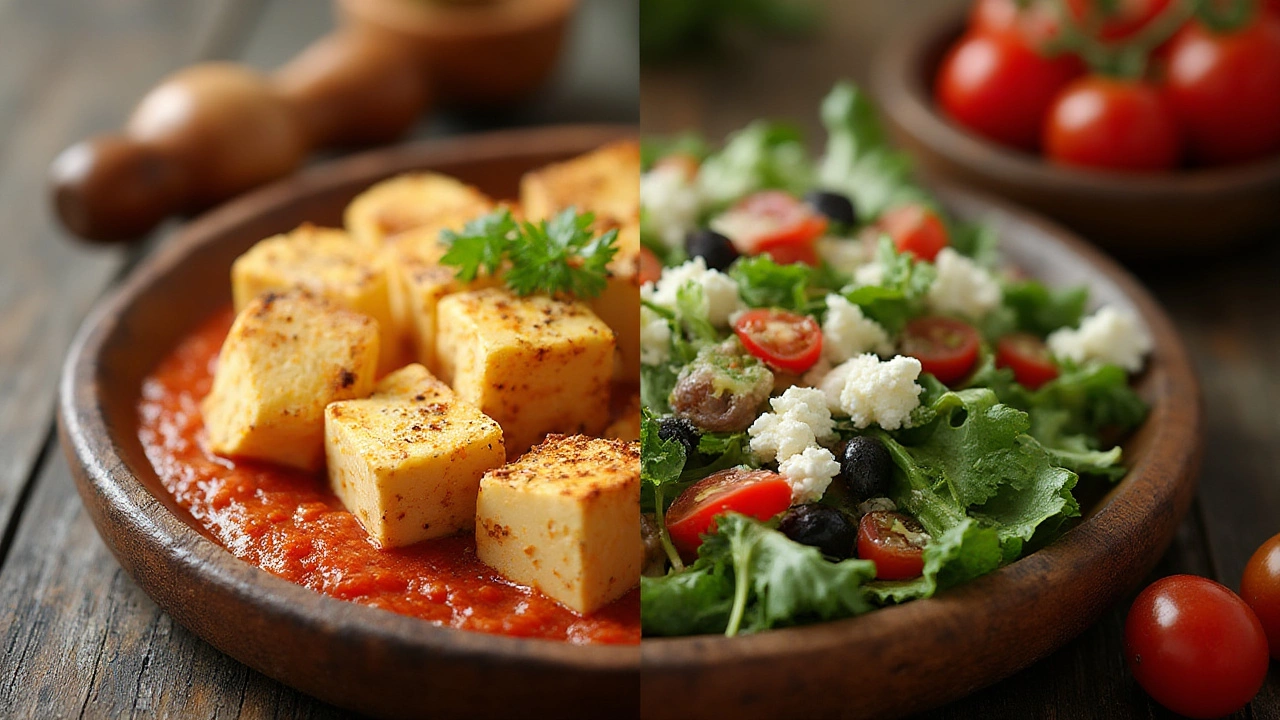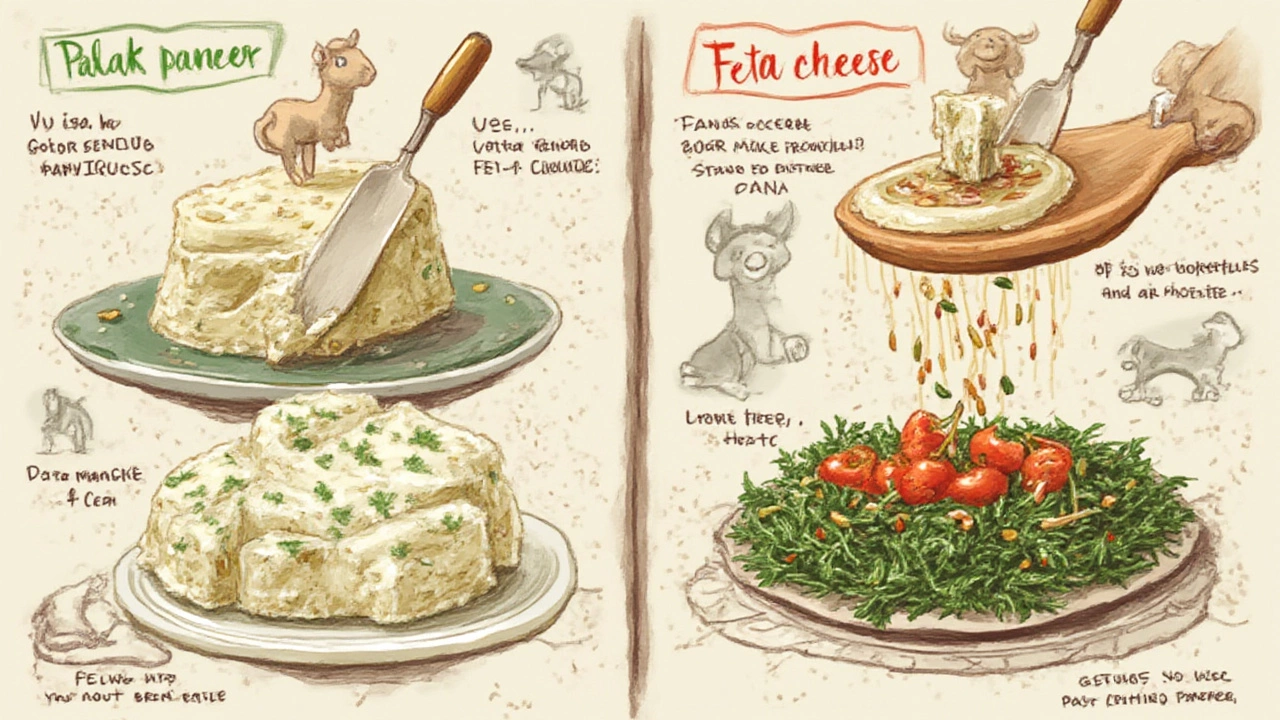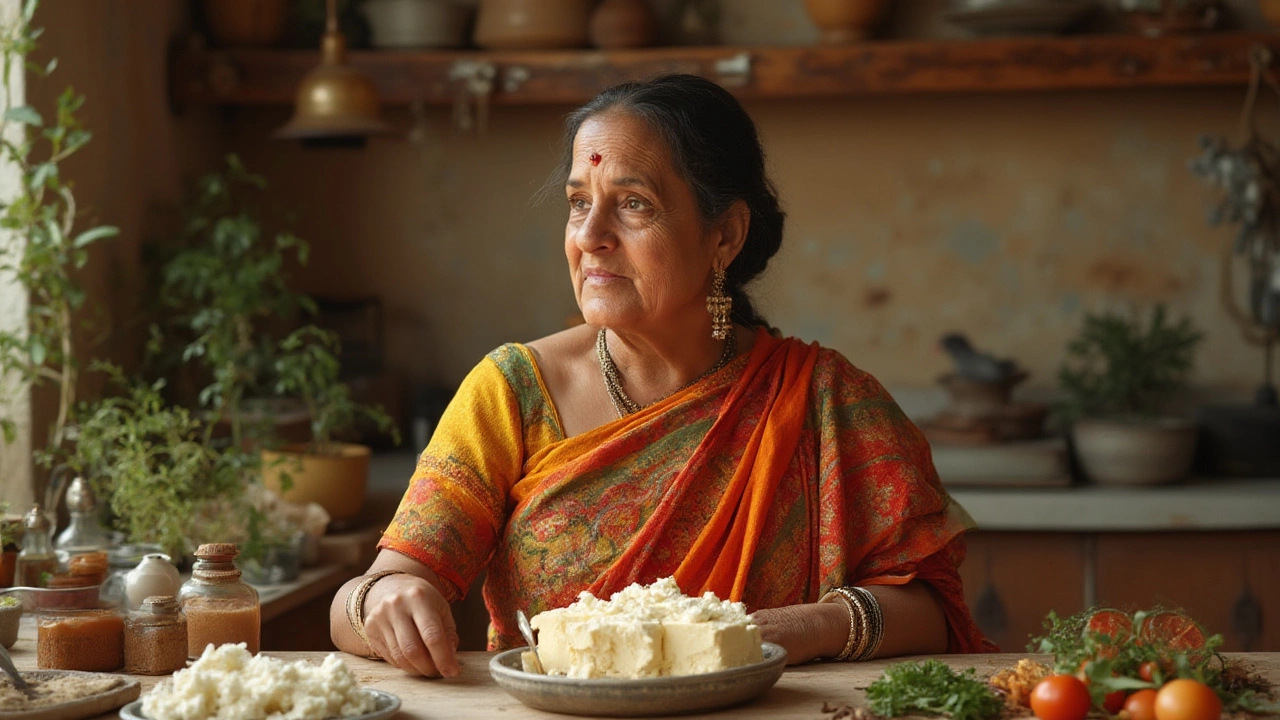White, crumbly, mild, and everywhere on Instagram salads—feta cheese always seems to get the spotlight. Then there’s paneer, which stars in every Indian kitchen, from homestyle saag paneer to restaurant-style paneer tikka masala. They’re both soft, white cheeses, always cut into cubes, and make easy meatless protein swaps. But here’s the kicker: people keep swapping them out for each other, and that never quite works. Paneer samosas stuffed with feta somehow taste off, while Greek salads with paneer just don’t hit the mark. If you’re wondering if greek feta cheese is actually paneer, or even a distant cheesy cousin, you’ll want to stick around.
What Actually Is Greek Feta Cheese?
Think feta and you’re probably thinking Greece—the blue-white islands, sun-kissed tomatoes, and cheese sprinkled everywhere. Feta actually has roots going back at least 2,000 years. The ancient Greeks already knew a thing or two about good cheese, and feta’s been a staple in their culture and kitchen since Homer wrote the Odyssey (yes, that far back). Today, by strict EU law, real feta cheese can only come from certain parts of Greece and must be made mostly from sheep’s milk, sometimes mixed with up to 30% goat’s milk.
Here’s a quick look at what makes feta, well, feta:
- Sheep or goat’s milk—gives it a rich, slightly gamey flavor.
- Brined—after production, feta ripens for at least two months in salty brine, picking up its tangy, salty punch.
- Crumby or creamy—authentic feta is both crumbly yet moist, thanks to how it’s stored.
- Protected—"feta" is a Protected Designation of Origin (PDO) cheese under EU law, so only certain Greek regions can legally call their cheese feta.
The flavor is tangy, salty, and a tad sharp. Greek feta is so beloved that the average Greek eats nearly 23 kilograms (over 50 pounds!) of cheese a year, more than anyone else on Earth. Feta makes up about three-quarters of that, so it’s safe to call this cheese a national treasure. It’s rarely tossed into heat (it melts messily), but crumbled into salads, pies like spanakopita, or mixed into desserts with honey or fruit.
Nutrition-wise, feta packs a punch for its size. Here’s a simple table to compare a 30g (about 1-ounce) serving:
| Feta Cheese | |
|---|---|
| Calories | 80 |
| Protein | 4g |
| Fat | 6g |
| Sodium | 310mg |
| Calcium | 140mg |
Notably, the sodium is sky-high, which is why feta delivers such a briny kick. It’s also higher in fat than many fresh cheeses, especially compared to cow’s milk options. If you’re watching your salt or following a low-fat diet, the replacement isn’t always as simple as swapping for paneer.

Paneer: The Vegetarian Cheese of India
Now, about paneer. No brine, no sheep’s milk, and certainly no thousand-year-old Greek villages. Paneer lives in a completely different universe—a key character in almost every North Indian home. Its story is less ruled by EU law and more by kitchen rituals and family recipes. Rather than sheep or goat’s milk, paneer is made almost exclusively from cow’s milk in India. The method is as simple as it gets: boil the milk, curdle it with an acid (usually lemon juice or vinegar), strain out the curds, and press them under a heavy weight until firmly set.
What makes paneer stand apart is its texture and taste. It doesn’t melt when heated, which makes it perfect for grilling, frying, and simmering in curries. It soaks up whatever flavors you throw at it—spices, sauces, and even tangy chutneys. The taste? Mild. Some even say it’s a blank canvas, which is exactly why it’s a kitchen staple: you can bend it to your every culinary whim.
Here’s a look at one ounce (30g) of homemade paneer:
| Paneer | |
|---|---|
| Calories | 90 |
| Protein | 6g |
| Fat | 7g |
| Sodium | 6mg |
| Calcium | 150mg |
Sodium is minimal since there’s no brining. The protein is a bit higher, which is why vegetarians across India rely on paneer as a major protein source. You’ll see paneer in everything—paneer tikka on skewers, cubes in spicy curry, grated into stuffed breads (parathas), or scrambled (paneer bhurji) for breakfast. Unlike feta, which never quite holds its shape, paneer’s solid consistency means you can fry it until golden and still have a soft, chewy center. No salty punch here—paneer’s beauty lies in its freshness and subtlety.
If you’ve never made it at home, it’s surprisingly easy. Want to try? Bring a liter of full-fat milk to a boil, stir in 2 tablespoons of lemon juice, stir until it curdles, strain in muslin, rinse, fold up, and press under a heavy pan for 30 minutes. You’ll have about 150g of soft, fresh paneer. You can cube it and eat right away, or keep in water so it stays super moist. No culture or salt required.

Feta Cheese vs. Paneer: Can You Swap Them?
Alright, so say you’re making palak paneer but spot feta in your fridge. Could you get away with substituting one for the other? It might seem tempting, but things start to unravel quickly when you break down the details. Here’s a head-to-head comparison to spell it all out:
- Milk source: Feta is almost always from sheep and/or goat (rarely cow), giving it a stronger taste and aroma. Paneer tends to be from cow’s milk, making it much milder and sweeter.
- Texture: Feta crumbles easily, falling apart if you try to cube it for curries. Paneer holds its form even after long cooking.
- Salt: Feta is salty—painfully so if you eat too much. Paneer has almost no salt.
- Melting: Cook feta and it oozes or dissolves. Paneer remains solid, perfect for stir-fries and grilling.
- Fat: Feta’s fat can make curries greasy. Paneer’s fat is creamy and melds with sauces differently.
Here’s a quick glance at how they stack up for the kitchen:
| Characteristic | Greek Feta Cheese | Paneer |
|---|---|---|
| Origin | Greece | India |
| Milk Source | Sheep/Goat | Cow |
| Texture | Crumbley, moist | Firm, non-melting |
| Taste | Tangy, salty | Mild, milky |
| Cooking Uses | Salads, no heat, pastries | Curries, fries, grills |
If you’re looking for that salty, tangy hit, only feta delivers. But if you’re after cubes that stay whole in a hot curry, paneer wins every time. Swapping one for the other might be okay in something neutral—say, a toastie with veggies and herbs—but put feta in your butter masala, and you’ll end up with a mess. Likewise, paneer lacks the briny, punchy personality that makes feta special in Greek dishes.
Curious cooks sometimes dial back feta’s saltiness by soaking it in cold water or milk for 30 minutes. But no matter what, feta’s creaminess won’t hold up in a sizzling pan. Likewise, paneer can be salted and crumbled into salads for a milder feta vibe, but Indian cooks usually work it into cooked dishes since its heat-resistant structure is the whole draw.
If you’re vegan or looking for dairy-free, keep in mind neither cheese is vegan, and paneer can sometimes use animal-derived rennet outside India, though most homemade and Indian brands go the vegetarian route. Feta, especially outside the EU, may occasionally use cow’s milk, which can change its flavor and texture, so double check your label if you’re after the real deal.
So no, Greek feta cheese is not paneer—and they’re not really close either. Each has its own place, character, and magic in the kitchen. Next time you find yourself tempted to make a substitution, try going for something a little closer instead: ricotta salata or queso fresco can stand in for feta if you need mild and crumbly, whereas firm tofu is a passable swap for paneer if you need a vegan cube that soaks up sauce. Still, nothing beats the real thing in the right dish.
